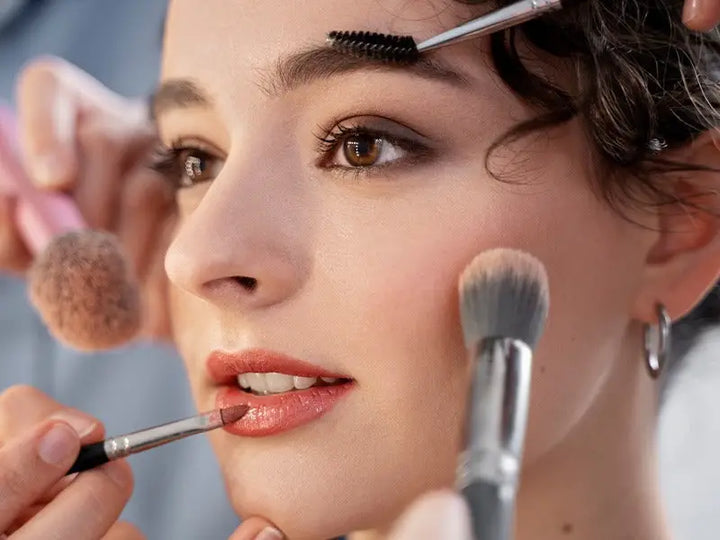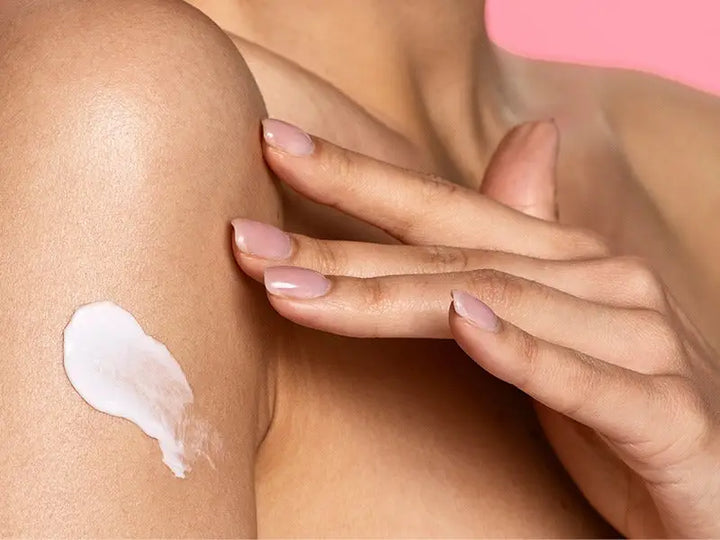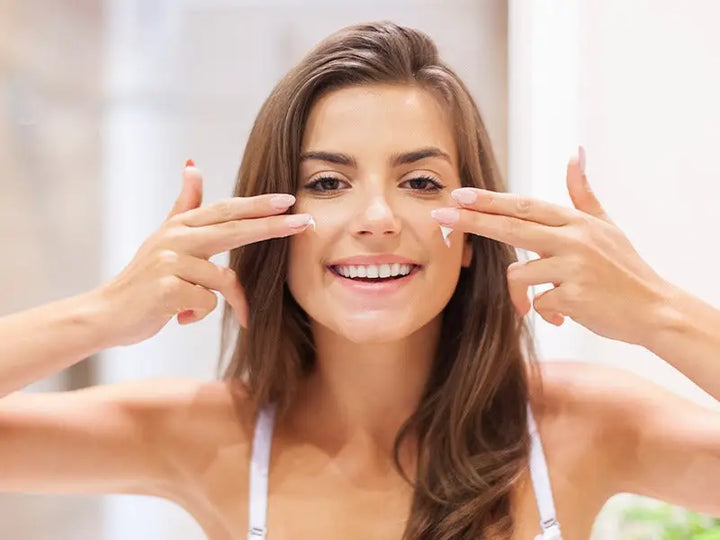When it comes to makeup, even the most skilled individuals can make mistakes. These mistakes can range from choosing the wrong foundation shade to applying too much blush. In this article, we will explore some of the most common makeup mistakes and provide tips on how to fix them. Whether it's blending your eyeshadow properly or finding the right lipstick shade, we will help you navigate through these common pitfalls and enhance your makeup skills. With the right techniques and a little bit of practice, you can easily correct these mistakes and achieve a flawless makeup look every time. So, let's dive in and learn how to fix these common makeup mishaps!
Not prepping skin properly.
Properly prepping your skin before applying makeup is essential for achieving a flawless and long-lasting look. Skipping the necessary steps in your skincare routine can lead to a less-than-desirable end result. Cleansing your skin helps to remove any dirt, oil, and impurities, creating a clean canvas for your makeup. Toning helps to balance the skin's pH levels and minimize the appearance of pores. Using a facial oil, if appropriate for your skin type, can provide added hydration and create a smooth base for makeup application. Finally, applying a moisturizer is crucial for keeping the skin hydrated and creating a barrier between your skin and your makeup.
A fully hydrated and prepped face allows for a more even and smooth application of makeup. Without proper skincare prep, makeup can appear patchy, uneven, and may not last as long throughout the day.
A simple but effective skincare routine includes cleansing, toning, applying a facial oil (if applicable), and moisturizing. It's important to allow these products to rest and sink into the skin before applying primer and foundation to ensure the best results. Remember, taking care of your skin is the first step in achieving a flawless makeup look.
Q: What should I do if I didn't give enough time for the skincare product to be absorbed into the skin?
A: If you find yourself in a rush and didn't give enough time for your skincare products to fully absorb into the skin, don't worry! There are still steps you can take to salvage your makeup application.
First, gently pat your face with a clean tissue or a soft cloth to remove any excess product sitting on the surface of the skin. This will prevent your makeup from sliding off or appearing gre asy. Next, apply a lightweight primer to create a smooth base for your makeup. A primer can help fill in any uneven texture and blur the appearance of pores.
When it comes to foundation application, opt for a lightweight formula that is easy to blend. Using a damp makeup sponge or a brush, start by applying small amounts of foundation onto your skin. Blend it outwards in gentle circular motions, making sure to focus on areas where the skincare products may not have fully absorbed. This will help to blend the foundation seamlessly into the skin and create a more even complexion.
Not changing foundation with age.
As we age, our skin undergoes a number of changes that can impact the effectiveness of our foundation. Key signs of aging on the skin include dryness, loss of radiance, and the development of fine lines and wrinkles. These changes can make it more difficult for traditional foundation to glide on smoothly and evenly, leading to a cakey or uneven finish.
Switching to a creamy foundation can help combat these signs of aging by providing a hydrating and moisturizing base that can smooth over dry patches and minimize the appearance of fine lines. Additionally, adjusting your skincare routine to include more hydrating and nourishing products can help improve the overall texture and appearance of your skin, making it easier for foundation to adhere and blend seamlessly.
Using a primer before applying foundation and setting your makeup with a setting spray or powder can also ensure a long-lasting and fresh look. Primer helps to create a smooth canvas for foundation application and can extend its wear time, while setting products help to lock everything in place for a flawless finish throughout the day.
In conclusion, as we age, it's important to adapt our makeup routine to accommodate the changes in our skin. Switching to a creamy foundation, adjusting our skincare routine, and incorporating primer and setting products can all help to ensure that our makeup looks its best and lasts throughout the day.
Applying makeup in the wrong lighting.
When applying makeup, the use of natural or warm white LED lighting is crucial for achieving the best results. Natural lighting provides the most accurate representation of how your makeup will look in different settings, ensuring that your makeup is well-blended and the colors are true to life. On the other hand, artificial or fluorescent lighting can cast unflattering shadows and alter the colors of your makeup, leading to over or under-application.
To adjust your makeup routine for the best results, position yourself near a window or skylight to take advantage of natural lighting. If natural lighting is not available, consider using a soft white bulb to mimic the natural daylight. Testing makeup in the best lighting possible is necessary for achieving a flawless look, as it allows you to see how the makeup appears in different conditions and make any necessary adjustments.
In conclusion, the impact of natural lighting on makeup application cannot be overstated. Using natural or warm white LED lighting ensures that your makeup looks great in any setting, and testing makeup under the right lighting is essential for achieving the desired results.
Using too much concealer.
Using too much concealer can lead to several potential consequences, such as highlighting wrinkles and fine lines. When excessive product is applied, it can settle into the creases of the skin, making them more noticeable and emphasizing the appearance of aging. Additionally, using an excessive amount of concealer can create a heavy, cakey look, which can appear unnatural and unflattering.
To avoid these consequences, it is important to choose a lightweight concealer with good coverage and to apply it sparingly. Setting the concealer correctly with a translucent powder can also help minimize creasing and ensure a more natural finish.
When applying concealer to cover dark circles, blemishes, or to even out skin tone, it is essential to use the correct techniques. This includes using a small, precise brush or a beauty blender to blend the product seamlessly into the skin. For dark circles, applying the concealer in a triangular shape under the eyes can help brighten and conceal any discoloration. When covering blemishes, gently patting the product onto the affected area and blending the edges into the surrounding skin can provide a more natural appearance.
In summary, using too much concealer can have undesirable consequences such as highlighting wrinkles and creating a heavy, unnatural look. Choosing a lightweight concealer with good coverage and applying it correctly using the appropriate techniques can help achieve a more flawless and natural finish.
Q: What steps can be taken if too much concealer is applied?
A: If you find yourself applying too much concealer, there are steps you can take to correct the mistake. First, resist the urge to pile on more product to cover up the excess. Instead, gently blend and pat the concealer with your fingertips or a damp beauty sponge. This will help distribute the product more evenly and reduce any cakey or heavy appearance.
Next, consider using a clean brush or beauty blender to lightly buff and blend the excess concealer into the skin. This can help smooth out any creases or buildup, creating a more natural and seamless finish.
If the excess concealer is still noticeable, you can try using a clean, fluffy brush to lightly dust a translucent powder over the area. This will help set the concealer and provide a matte finish, reducing any shine or potential creasing.
Finally, if all else fails and the excess concealer is still visible, you can try using a color corrector or a color-correcting concealer. Color correctors are specifically formulated to neutralize and counteract specific skin concerns, such as dark circles or redness. By applying a thin layer of color corrector in the appropriate shade (e.g., peach or orange for dark circles), you can help cancel out the excess concealer and create a more balanced and natural undertone.
Overall, the key to fixing the mistake of using too much concealer is to gradually blend and layer the product until you achieve the desired coverage without any heaviness or cakey appearance. Taking your time and using the correct tools and techniques will help you achieve a flawless result.
Forgetting to take care of lips.
As we age, it's easy to forget to take care of our lips, but it's just as important as any other part of our body. Lips can become dry, cracked, and lose their fullness over time. Proper lip care is essential for maintaining a youthful appearance.
To care for lips, it's important to exfoliate with a gentle lip scrub once a week to remove dead skin cells and keep them soft and smooth. Applying a hydrating lip balm daily can help prevent dryness and keep lips moisturized.
Using lipstick or gloss with color and a lip liner can create the appearance of fuller and more youthful lips. Sticking to natural lip colors, such as nude or soft pinks, can help achieve a fuller look. Lip color can also help to enhance the overall appearance of the lips and add a touch of vibrancy to the face.
In conclusion, prioritizing lip care is essential as we age. By exfoliating, hydrating, and using the right lip color, we can maintain the youthful appearance of our lips. Don't forget to incorporate lip care into your regular skincare routine for the best results.
Applying heavy mascara on bottom lashes.
Applying heavy mascara on the bottom lashes can accentuate wrinkles and make eyes appear smaller for a couple of reasons. First, the weight of the mascara can cause the lashes to clump together, drawing attention to any fine lines or wrinkles around the eyes. Additionally, a heavy application of mascara on the bottom lashes can weigh down the lashes and create a droopy effect, making the eyes appear smaller than they actually are.
Instead of heavy mascara, it's recommended to apply a light coat of mascara to the bottom lashes to avoid drawing attention to under-eye wrinkles. A light coat will give the lashes subtle definition without weighing them down or emphasizing any fine lines.
To avoid accentuating wrinkles and making the eyes appear smaller, it's best to use mascara to accentuate the edges of the eyes for extra expressiveness while avoiding a heavy application on the bottom lashes. By focusing on the top lashes and using a light touch on the bottom lashes, you can achieve a more youthful and open-eyed look without emphasizing wrinkles.
In conclusion, when it comes to applying mascara on the bottom lashes, a light coat is key to avoiding the accentuation of wrinkles and ensuring that the eyes appear big and bright.
Accidental smudging
To prevent accidental smudging, it is important to invest in waterproof mascara. Waterproof formulas are less likely to smudge or run throughout the day, especially in humid or rainy conditions. Additionally, applying makeup farther away from the eyes can help prevent irritation and makeup from running. When makeup is applied too close to the eyes, it can cause irritation and may contribute to smudging. By keeping makeup application at a safe distance from the eyes, it reduces the risk of irritation and ensures that the makeup stays in place. When applying eyeshadow or eyeliner, be mindful of the proximity to the lash line to avoid potential irritation and smudging. Overall, choosing waterproof mascara and being mindful of where makeup is being applied can greatly help prevent smudging and ensure long-lasting wear. So, it's best to invest in waterproof mascara and apply makeup farther from your eyes to avoid irritation and makeup running.
Q: What should I do if I accidentally smudged?
A: If you find yourself with an accidental smudge, don't panic. There are a few simple steps you can take to fix the issue and ensure your makeup looks flawless.
Firstly, resist the urge to immediately wipe away the smudge with your fingers or a tissue. This will likely spread the product further and make the smudge even more noticeable. Instead, take a clean cotton swab or a makeup remover wipe and gently dab at the smudged area to remove any excess product.
Next, use a clean brush or an angled eyeliner brush dipped in a bit of concealer or foundation to cover up the smudge. Lightly dab the brush onto the smudged area, blending it outwards to seamlessly blend it into your skin.
If the smudge is on your eyeliner , you can use a small angled brush dipped in black eyeshadow to gently go over the smudged area and redefine the line.
If the smudge is on your mascara, you can use a clean spoolie or an old mascara wand to carefully comb through your lashes and separate them. This will help remove any excess product and restore the appearance of separated lashes.
Lastly, if necessary, you can touch up your eye makeup by reapplying a bit of eyeshadow or eyeliner to the area if needed. Just be sure to blend it seamlessly with the rest of your makeup for a natural look.
Remember, prevention is key when it comes to smudges.
Not applying blush.
Applying blush is an essential step in completing a makeup look as it adds a healthy flush of color to the cheeks and helps to bring dimension to the face. However, there are common mistakes to avoid when it comes to applying blush. One of the most important things to remember is to choose the right blush color that complements your skin tone. Using a color that is too dark or too bright can make the blush look unnatural. When applying blush, it is crucial to do so in moderation to achieve a natural look. Overdoing it can make the cheeks appear overly rosy or clown-like.
To achieve a soft and even blush application, it is important to choose the right brush and technique. Using a fluffy blush brush, gently tap off any excess product before applying it to the cheeks. Smile lightly to locate the apples of the cheeks and then sweep the blush upwards towards the temples for a flattering look. When applying blush, always blend well to avoid any harsh lines.
In conclusion, the importance of applying blush lies in adding a healthy and youthful glow to the face. By avoiding common mistakes, choosing the right color, and applying in moderation, one can achieve a natural and flattering blush application.
Layering On Too Much Mascara
There are a few simple steps you can take to fix the issue and achieve separated, voluminous lashes.
Firstly, avoid adding more mascara on top of the already applied layers. This will only make the clumping worse. Instead, take a clean spoolie or an old mascara wand and gently comb through your lashes from root to tip. This will help separate the lashes and remove any excess product that may be causing clumping.
If the clumping is still visible after combing through your lashes, you can use a clean cotton swab or a small brush dipped in eye makeup remover to carefully remove any excess mascara. Be sure to be gentle and avoid rubbing too harshly, as this can cause irritation or damage to your lashes.
Once you've removed any excess product, you can apply a new coat of mascara using a zigzag motion. This technique helps to evenly distribute the product and prevent clumping. Start at the base of your lashes and wiggle the wand back and forth as you move towards the tips. This will help separate and define each individual lash.
If you find that your mascara is still clumping even after following these steps, it may be time to consider switching to a different mascara formula. Some mascaras are more prone to clumping than others, so try out different brands or formulas to find one that works best for you.
Lastly, always remember to let your mascara dry completely before moving on to the next step in your makeup routine. This will help prevent smudging and ensure that your lashes stay separated and defined throughout the day.
Overdoing it with Contouring Contouring can be a great technique for adding dimension and definition to the face, but it's important to avoid overdoing it. Too much contouring can make the face appear muddy or overly sculpted.
And don't forget to replace your mascara every 3 months to prevent any potential eye infections from expired products.
Sleeping With Makeup On
Sleeping with makeup on can have serious consequences for your skin. Failing to remove all traces of makeup before bed can lead to clogged pores, which can result in dryness, acne, and even infections. Makeup can mix with the natural oils and bacteria on your skin, creating a breeding ground for bacteria to thrive and cause breakouts. Additionally, the chemicals and ingredients in makeup can also be drying and irritating to the skin if left on overnight.
It is important to prioritize skincare by thoroughly cleansing the skin before bedtime to maintain its health and appearance. This includes using a gentle makeup remover, followed by a cleanser to ensure that all makeup and impurities are removed from the skin. Not only will this help prevent breakouts and infections, but it will also allow your skin to breathe and renew itself overnight.
In order to maintain healthy and glowing skin, it's crucial to make makeup removal and thorough skincare a non-negotiable part of your bedtime routine. By doing so, you'll be taking proactive steps to prevent dryness, acne, and other potential skin issues, and ensure that your skin remains healthy and beautiful.
Wrong Blending Techniques
When it comes to achieving a natural makeup look, the proper blending techniques are essential. To start, invest in quality brushes as they make a significant difference in achieving a flawless finish. Watch makeup videos and tutorials online to learn different blending techniques and tricks from professionals.
One common mistake people make when blending makeup is using the wrong tools. It's crucial to use the right brushes for each step of your makeup routine. For example, a fluffy blending brush is perfect for blending out eyeshadow, while a stippling brush is great for blending out foundation for a natural finish.
Another mistake is not taking the time to blend properly. Rushing through the blending process can leave harsh lines and an unnatural appearance. Mastering the art of blending takes time and practice, so be patient and take your time to ensure a seamless finish.
Overall, using the right brushes and mastering the techniques of blending are crucial for achieving a natural, flawless makeup look. Watch tutorials and practice different blending techniques to find the methods that work best for you.
Using the Right Tools: The Makeup Brush Guide
Makeup brushes come in various shapes and sizes, each designed for specific purposes to achieve a flawless makeup application. The foundation brush, for example, has dense, flat bristles to evenly and smoothly apply liquid or cream foundation. The fluffy, rounded bristles of a blush brush allow for seamless blending and diffusing of powder blush on the cheeks. Eyeshadow brushes also come in different shapes, such as flat, fluffy, and angled, to perfectly apply and blend eyeshadow on the lids and crease.
When choosing the right makeup brush for different products, it's important to consider the texture and formula of the product. For liquid and cream products, opt for synthetic brushes as they are less absorbent and apply product more evenly. Natural bristle brushes are best for powder products as they pick up and apply product seamlessly.
Using the right tools for makeup application is crucial for achieving a professional and flawless look. By choosing the appropriate makeup brush for each product, you can ensure the perfect application and blending, resulting in a flawless finish.
Conclusion: Mastering the Art of Makeup
In conclusion, mastering the art of makeup requires a solid understanding of key techniques to achieve a flawless look. It is important to use the right makeup products for your skin type and to understand the significance of proper application techniques. This includes knowing how to blend foundation seamlessly, apply eyeshadow with precision, and create the perfect winged eyeliner.
Additionally, it is crucial to know how to fix common makeup blunders, such as smudged mascara or uneven foundation. One bonus trick for erasing makeup mistakes is to use a beautyblender and makeup remover to gently remove any smudges or excess product without disrupting the rest of your makeup.
By mastering these techniques and understanding the importance of using the right products and application methods, anyone can achieve a flawless makeup look. Remember, practice makes perfect, so don't be afraid to experiment with different techniques and products until you find what works best for you. With patience and dedication, anyone can become an expert at the art of makeup.



















